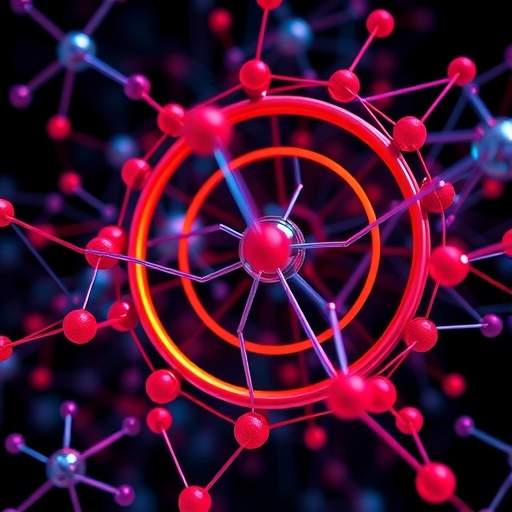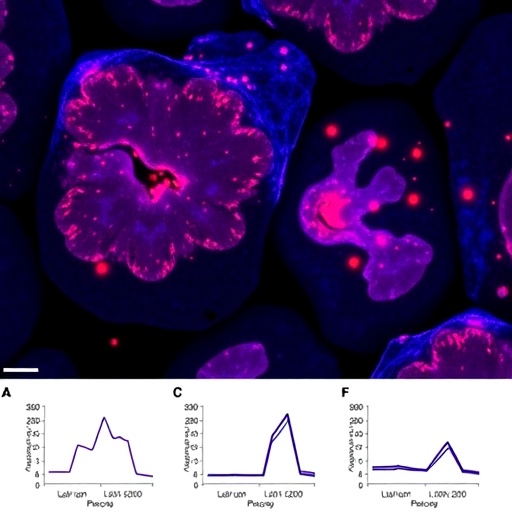In recent years, scientific exploration in the realm of pharmaceuticals has witnessed a significant pivot towards computational methods, particularly through the application of neural networks. The growing field of drug–target interaction (DTI) predictions has emerged as a crucial area of focus for researchers looking to expedite drug discovery processes, enhance precision medicine, and ultimately improve patient outcomes. With the staggering complexity of biological systems, traditional experimental methodologies can fall short, prompting the need for innovative computational approaches. A comprehensive review conducted by researchers F. Panahandeh and N. Mansouri highlights the advancements and applications of neural network-based strategies in predicting drug–target interactions, shedding light on a transformative shift in the drug discovery paradigm.
Neural networks, inspired by the workings of the human brain, represent a class of machine learning models that excel at identifying complex patterns within large datasets. This capability is particularly relevant in the field of bioinformatics, where biological data can often be voluminous and multifaceted. By leveraging neural networks, researchers can analyze numerous factors, such as chemical structures of drug compounds and the molecular characteristics of biological targets. The ability to apply these advanced algorithms allows for improved prediction accuracy in DTI, ultimately facilitating the identification of promising drug candidates at an accelerated rate.
The review focuses on various neural network architectures that have been employed in DTI prediction tasks. Notably, convolutional neural networks (CNNs) and recurrent neural networks (RNNs) have emerged as prominent tools due to their ability to process sequential information and interpret spatial relationships within data. CNNs, for instance, have proven effective in extracting features from molecular representations, while RNNs have been utilized to model sequences of interactions over time. These architectures have shown remarkable potential in deciphering the complex interplay between drugs and their corresponding biological targets.
.adsslot_zqoNDHG50i{ width:728px !important; height:90px !important; }
@media (max-width:1199px) { .adsslot_zqoNDHG50i{ width:468px !important; height:60px !important; } }
@media (max-width:767px) { .adsslot_zqoNDHG50i{ width:320px !important; height:50px !important; } }
ADVERTISEMENT
Furthermore, Panahandeh and Mansouri delve into the importance of integrating multi-omics data in enhancing the predictive capabilities of neural networks. By incorporating genomic, proteomic, and metabolomic data, researchers can create a more comprehensive picture of biological systems and interactions. This multidimensional approach not only enriches the input fed into neural networks but also aids in uncovering novel biological pathways and mechanisms of drug action. As researchers continue to explore the synergistic effects of combining diverse data types, the role of neural networks as a predictive tool in precision medicine becomes ever more critical.
The challenges of data scarcity and quality in drug development are also examined in the review. While numerical data in the form of molecular fingerprints and bioactivity scores may be abundant, obtaining high-quality experimental data for novel drugs remains a significant hurdle. This is where neural networks can shine by enabling transfer learning and data augmentation techniques that enhance performance even with limited labeled datasets. Approaching the complexities of DTI with these advanced algorithms can mitigate some of these limitations, significantly improving the reliability of predictions made by neural networks.
The review underscores the progress in neural network interpretability, a vital aspect as researchers seek to understand the ‘black box’ nature of deep learning models. Enhanced interpretability can clarify how neural networks make predictions, leading to greater trust in these models within the scientific community. Techniques such as saliency mapping and layer-wise relevance propagation provide insights into which molecular features influence DTI predictions, ultimately paving the way for more informed decision-making in drug discovery.
In addition to examining technical methodologies, the review addresses the real-world impact of neural network-based DTI predictions on pharmaceutical development. By decreasing the time and cost associated with drug discovery, these computational models have the potential to bring life-saving medications to market more swiftly. As the healthcare landscape continuously evolves, the integration of advanced technologies such as neural networks into the DTI field represents a forward-thinking approach that aligns with the overarching goal of improving patient care.
An important aspect that Panahandeh and Mansouri consider is the ethical implications of employing artificial intelligence in drug discovery. As these technologies become more entrenched within pharmaceutical practices, questions regarding data privacy, algorithm bias, and transparency will undoubtedly arise. As stakeholders navigate these intricacies, it is essential to establish guidelines and best practices that promote ethical AI usage while ensuring robust scientific rigor.
The collaborative nature of DTI prediction research also warrants attention. Multidisciplinary teams, combining expertise from computational biology, pharmacology, and data science, play a crucial role in advancing the field. By harnessing diverse perspectives, researchers can address both complex biological questions and technical challenges in DTI prediction, ensuring that neural network models are both effective and applicable within real-world contexts.
Amidst this landscape of transformation, the review serves as an essential touchpoint for the scientific community. It not only encapsulates the current state of neural network-based approaches for DTI prediction but also inspires future explorations that embrace innovative thinking. As researchers continue to refine algorithms, integrate diverse data types, and commit to ethical practices, the potential of neural networks to revolutionize drug discovery appears boundless.
In conclusion, the journey towards optimized drug development is increasingly intertwined with the advancements in neural networks and artificial intelligence. The comprehensive review by Panahandeh and Mansouri highlights the significance of these technologies in predicting drug–target interactions, positioning them at the forefront of a transformative shift in pharmaceutical research. As this field continues to evolve, collaborative efforts and ethical mindfulness will be paramount in realizing the full benefits of neural network applications in drug discovery, ultimately leading to enhanced patient outcomes and a healthier global population.
As we stand on the precipice of these technological advancements, the excitement around neural network applications in DTI prediction is palpable. The thorough examination presented in the review not only underscores the innovative potential of these approaches but also echoes a broader call to arms for researchers and clinicians alike to embrace the future of drug discovery powered by artificial intelligence.
Subject of Research: Neural network-based approaches for drug–target interaction prediction.
Article Title: A comprehensive review of neural network-based approaches for drug–target interaction prediction.
Article References:
Panahandeh, F., Mansouri, N. A comprehensive review of neural network-based approaches for drug–target interaction prediction.
Mol Divers (2025). https://doi.org/10.1007/s11030-025-11303-6
Image Credits: AI Generated
DOI: 10.1007/s11030-025-11303-6
Keywords: Neural networks, drug-target interaction, machine learning, computational biology, precision medicine.
Tags: applications of neural networks in healthcarebiological data analysis techniquescomplex biological systems analysiscomputational methods in pharmaceuticalsdrug-target interaction predictionDTI predictive modelingenhancing patient outcomes through technologyinnovative drug discovery approachesmachine learning in bioinformaticsneural networks in drug discoveryPrecision Medicine Advancementstransformative shifts in drug discovery paradigms





